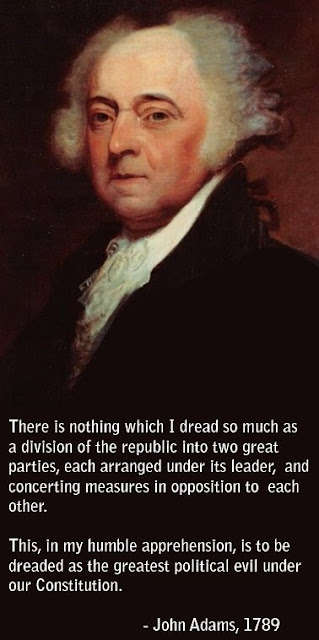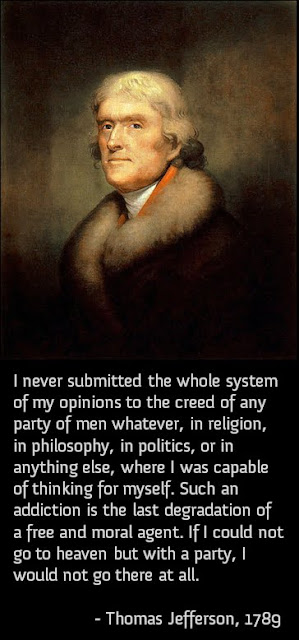.
On this day in 1789, America's first presidential election is held. Just as today, eligible voters cast ballots to choose electors in each state. BUT, only white men who owned property were allowed to vote. Women were not allowed to vote for president of the United States until 1920!
As expected, George Washington won the 1st election and was sworn into office on April 30, 1789.
1790s Christian Gullager 1759-1826 George Washington. Massachusetts Historical Society
As it did in 1789, the United States still uses the Electoral College system, established by the U.S. Constitution, which today gives all American citizens over the age of 18 the right to vote for electors, who in turn vote for the president. The president and vice president are the only elected federal officials chosen by the Electoral College instead of by direct popular vote.
In the 1780s, the Electoral College was considered by many to be an innovative tool of American democracy. At the Constitution Convention in 1787, the smaller states such as Delaware & Rhode Island sought to protect their states’ power without being overpowered by larger states such as Virginia & New York due to differences in population numbers. Also these states did not want the Congress to have extra power by picking a president & vice-president without any popular vote, so this power was switched to the voters by establishing the Electoral College.
At the time, some politicians believed a purely popular election was too risky what with all those emotional & uneducated new voters. Others objected to giving Congress the power to select the president. The compromise was to set up an Electoral College system that allowed all voters to vote for electors, who would then cast their votes for candidates, a system described in Article II, section 1 of the Constitution. Many delegates to the Constitutional convention believed the Electoral college itself reflected the U.S. Constitution itself which was based on a compromise between population-based & state-based governances.
Today these electors are chosen by their politcal parties, which were not universally accepted in the 1780s.
Today political parties usually nominate their slate of electors at their state conventions or by a vote of the party's central state committee, with party loyalists often being picked for the job.
An elector cannot hold office in the United States Congress, cannot be a high-ranking U.S. official in a position of "trust or profit," & cannot be someone who has "engaged in insurrection or rebellion" against the U.S.
Each state is allowed to choose as many electors as it has senators and representatives in Congress. The District of Columbia has 3 electors. During a presidential election year, on Election Day (the first Tuesday after the first Monday in November), the electors from the party that gets the most popular votes are elected in a winner-take-all-system, with the exception of Maine and Nebraska, which allocate electors proportionally. In order to win the presidency, a candidate needs a majority of 270 electoral votes out of a possible 538.
On the first Monday after the second Wednesday in December of a presidential election year, each state's electors meet, usually in their state capitol, and simultaneously cast their ballots nationwide. This is largely ceremonial: Because electors nearly always vote with their party, presidential elections are essentially decided on Election Day. Although electors aren't constitutionally mandated to vote for the winner of the popular vote in their state, it is demanded by tradition and required by law in 26 states and the District of Columbia (in some states, violating this rule is punishable by $1,000 fine). Historically, over 99 percent of all electors have cast their ballots in line with the voters. On January 6, as a formality, the electoral votes are counted before Congress and on January 20, the commander in chief is sworn into office.
Supporters of the Electoral College system contend that if the Electoral College were done away with, heavily populated states such as California and Texas might decide every election and issues important to voters in smaller states would be ignored.
Critics of the Electoral College argue that the winner-take-all system makes it possible for a candidate to be elected president even if he gets fewer popular votes than his opponent. This has occured 4 times in our history.
•1824: John Quincy Adams, the son of former President John Adams, received more than 38,000 fewer votes than Andrew Jackson, but neither candidate won a majority of the Electoral College. Adams was awarded the presidency when the election was thrown to the House of Representatives.
•1876: Nearly unanimous support from small states gave Rutherford B. Hayes a one-vote margin in the Electoral College, despite the fact that he lost the popular vote to Samuel J. Tilden by 264,000 votes. Hayes carried five out of the six smallest states (excluding Delaware). These five states plus Colorado gave Hayes 22 electoral votes with only 109,000 popular votes. At the time, Colorado had been just been admitted to the Union and decided to appoint electors instead of holding elections. So, Hayes won Colorado's three electoral votes with zero popular votes. It was the only time in U.S. history that small state support has decided an election.
•1888: Benjamin Harrison lost the popular vote by 95,713 votes to Grover Cleveland, but won the electoral vote by 65. In this instance, some say the Electoral College worked the way it is designed to work by preventing a candidate from winning an election based on support from one region of the country. The South overwhelmingly supported Cleveland, and he won by more than 425,000 votes in six southern states. However, in the rest of the country he lost by more than 300,000 votes.
•In 2000, Al Gore received 50,992,335 votes nationwide and George W. Bush received 50,455,156 votes. After Bush was awarded the state of Florida by the Supreme Court, he had a total of 271 electoral votes, which beat Gore's 266 electoral votes.
.
Langganan:
Posting Komentar (Atom)
Popular Posts
-
. 1729 John Smibert (American colonial era artist, 1688-1751). The Bermuda Group Family portraits are rare in early 18th century British col...
-
. 1730 John Smibert (American colonial era artist, 1688-1751) Sarah Middlecroft (Mrs Louis Boucher) Another rainy day here in Maryland. Been...
-
. His Life Johann Valentin Haidt (Heydt) was born in Danzig (Gdańsk), Poland, on October 4, 1700. Haidt came from a long line of goldsmiths ...








.+Zinzendorf+als+Lehrer+der+Vslker.+Moravian+Archives,+Herrnhut,+Germany.jpg)
Tidak ada komentar:
Posting Komentar